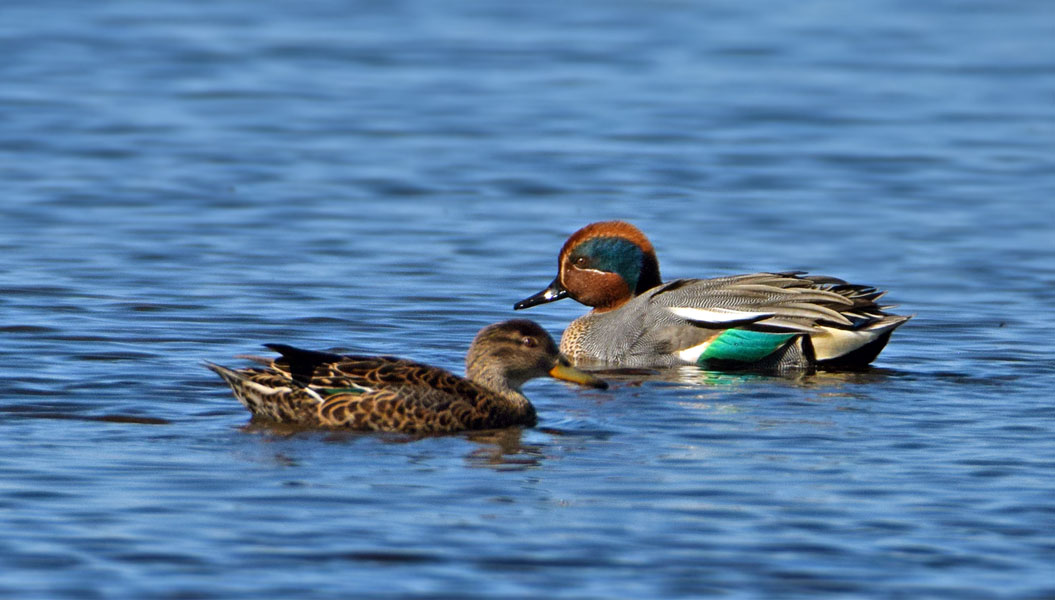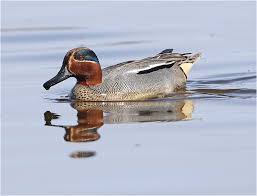Eurasian teal (Kricka)


Characteristics:
The Eurasian teal is Sweden’s smallest duck, about 35–40 cm long. The male has a chestnut-brown head with a green eye patch bordered by thin white lines, a grey body, and a light under-tail area. The female is mottled brown and resembles a small female mallard but has a green wing patch. Both sexes show a light leading edge on the wing, visible in flight.
Habitat:
Common across much of Sweden during the breeding season, especially around small lakes, bog pools, and calm streams. Migrates south in autumn to Western Europe and the Mediterranean region.
Diet:
Feeds on seeds, aquatic plants, small crustaceans, and insects filtered from the water.
Young:
The female lays 8–10 eggs in a well-hidden nest near water. The ducklings are independent shortly after hatching but stay close to the female for protection.
Call:
The male gives a soft whistling “prriit” or “krriit”, while the female has a short, harsh “krek-krek”.
Tracks:
Teal footprints are small, about 4–5 cm long, with three webbed toes forming a neat V-shape. Tracks are often seen in mud or sand near the shoreline.
Hunting:
Hunted in autumn, usually together with other ducks during small-water or marsh hunts.
Firearm class:
Eurasian teal hunting requires a class 3 or 4 shotgun, appropriate for small birds and light game.
